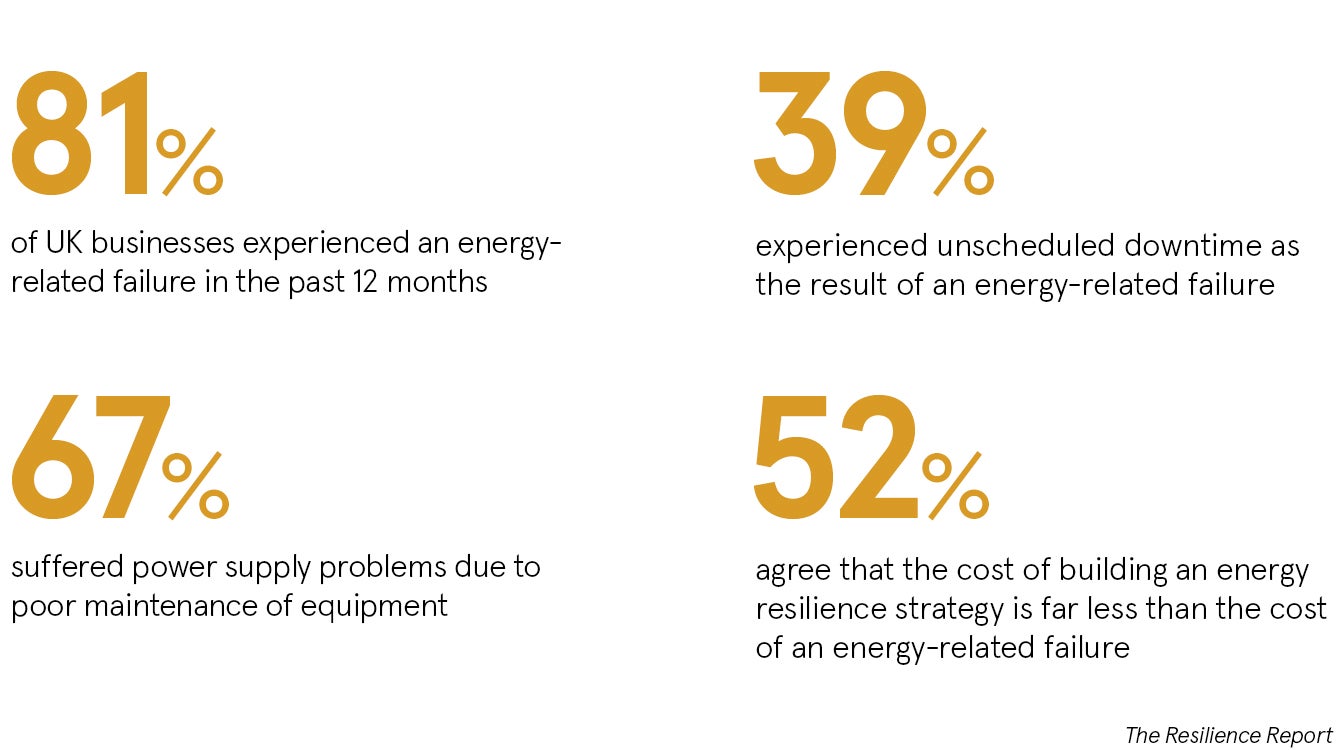The way energy is generated and consumed around the world has changed, and will continue to change for the rest of our lives. While there are many worst-case scenarios in business crisis management, an energy-related failure ranks among the most frequent and most damaging, yet it remains one of the least well prepared for.
The energy landscape is being reshaped by the shift away from traditional, centralised power generation towards a decentralised model that brings renewable energy sources such as solar, wind and tidal into the energy mix. Organisations that rely on constant, uninterrupted energy from a single source provider are in danger of being left behind by the broadening energy landscape and vulnerable to energy-related pitfalls that lie ahead.
And therein lies the problem: reliance. Organisations need to become less energy reliant and more energy resilient by investing in their own energy-producing capabilities as well as making the energy they use go even further.

What makes an energy-related failure so hard to protect against, and therefore so damaging to business, is that it’s almost impossible to know when one is going to happen. But when we start to look at their various causes, we begin to see there are in fact ways that businesses can be better protected.
Ageing and poorly maintained equipment are among the commonest causes of energy-related failures, but maintaining every piece of equipment and machinery so that it remains in peak working order is an absurdly expensive way for any large organisation to prevent breakdowns. Fortunately, there are more elegant and cost-effective solutions that are now available to help businesses become more energy resilient.
Organisations need to become less energy reliant and more energy resilient
Panoramic Power, for example, uses self-powering sensors that attach to energy-using equipment and wirelessly transmit real-time data to PowerRadar, a cloud-based analytics platform, to track energy consumption across the organisation and to identify potential equipment failures before they happen.
Organisations that have already introduced Panoramic Power to their systems have benefited from reduced maintenance costs, prevented unscheduled downtime and seen savings upwards of 50
per cent.
For organisations that want to take greater control of their energy usage by being able to produce their own, combined heat and power (CHP) offers an effective two for one.
Gas remains far cheaper than electricity, so with gas-powered CHP generators on-site, organisations have a cost-efficient alternative energy source that protects them from local grid failure, as well protecting against future rises in energy prices, in particular non-commodity costs which currently make up over half of their bill.
CHP units are also able to capture the additional heat they generate so, instead of wasting it, this can be used as a cost-efficient heat supply – less external reliance, more
internal resilience.
Centrica Business Solutions has surveyed energy decision-makers across multiple industries to assess the challenges posed by a lack of energy continuity. The results from this survey, along with Centrica’s recommendations on how to reduce exposure to energy-related failures and unstable energy markets, can be found in The Resilience Report.
Please visit www.centricabusinesssolutions.com/resilience
to download The Resilience Report and learn more about how energy resilience can help you and your organisation to outsmart the future

Organisations need to become less energy reliant and more energy resilient
